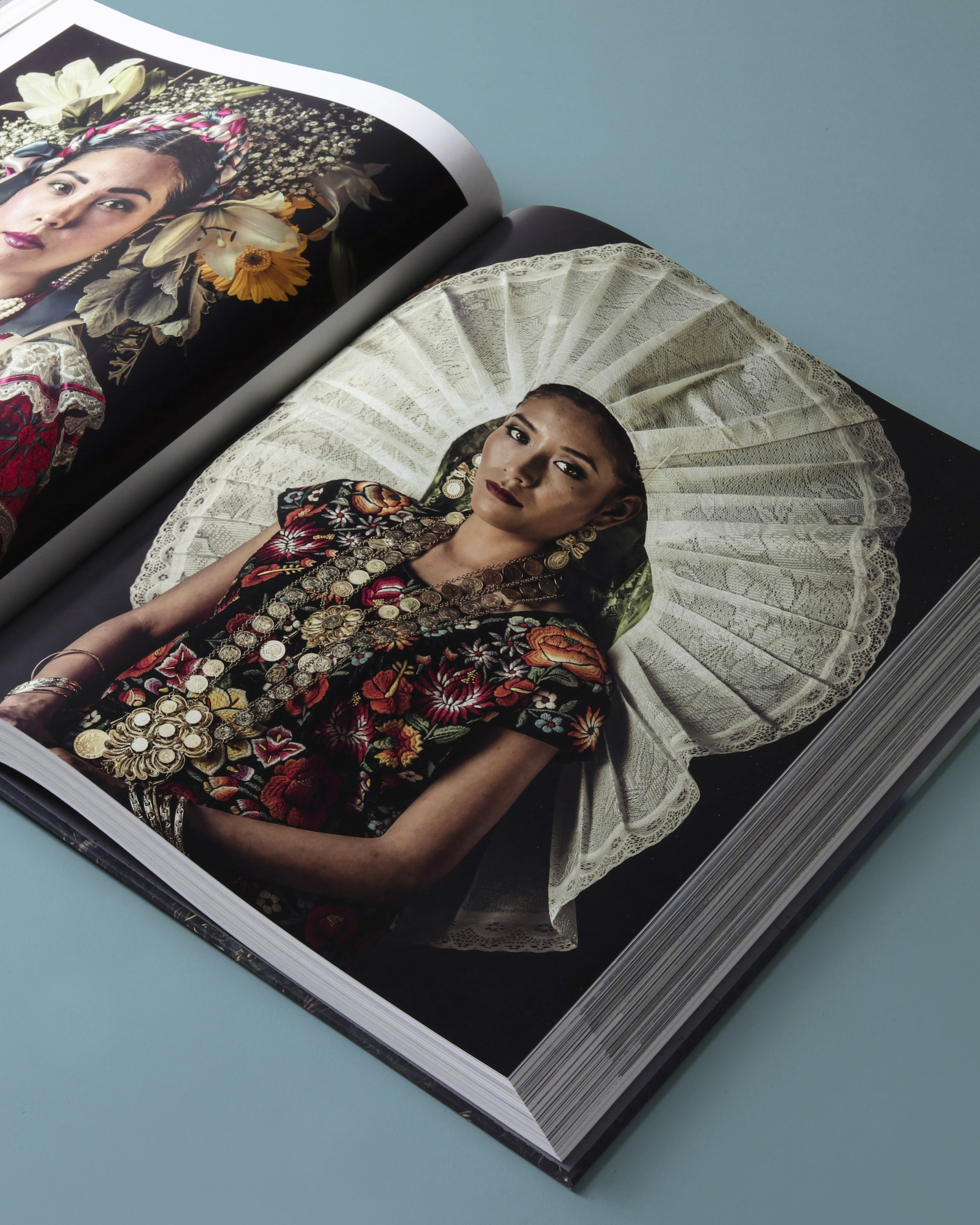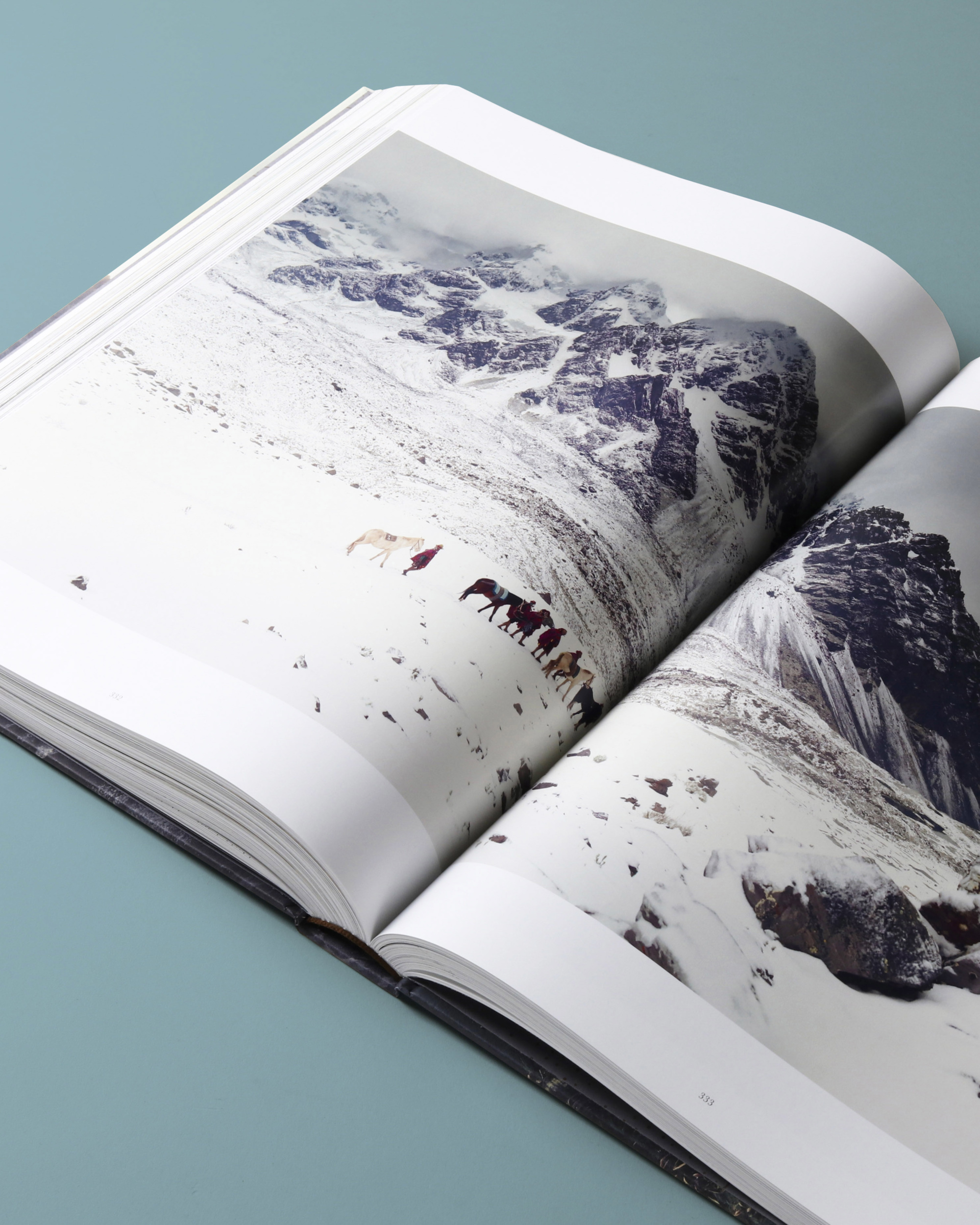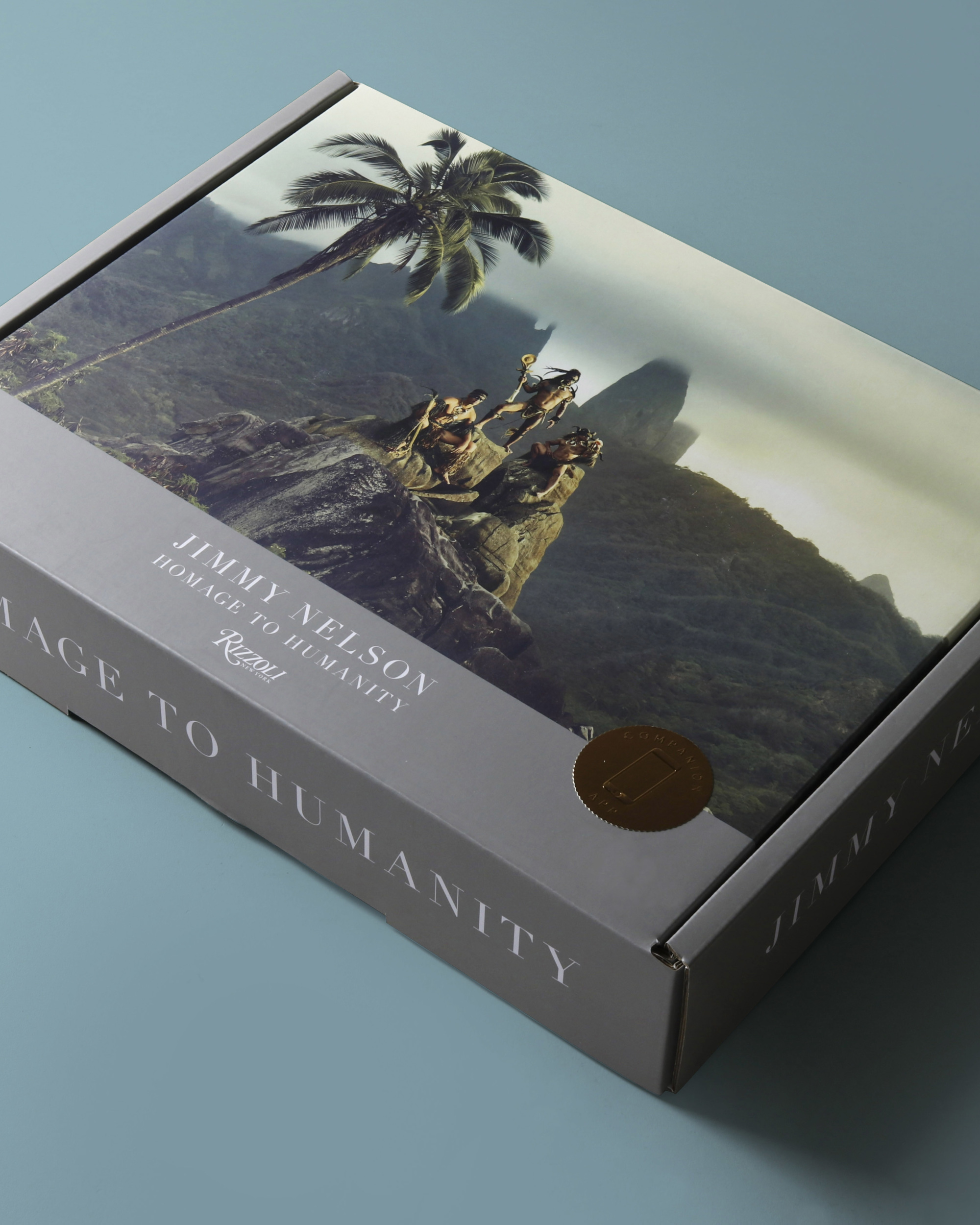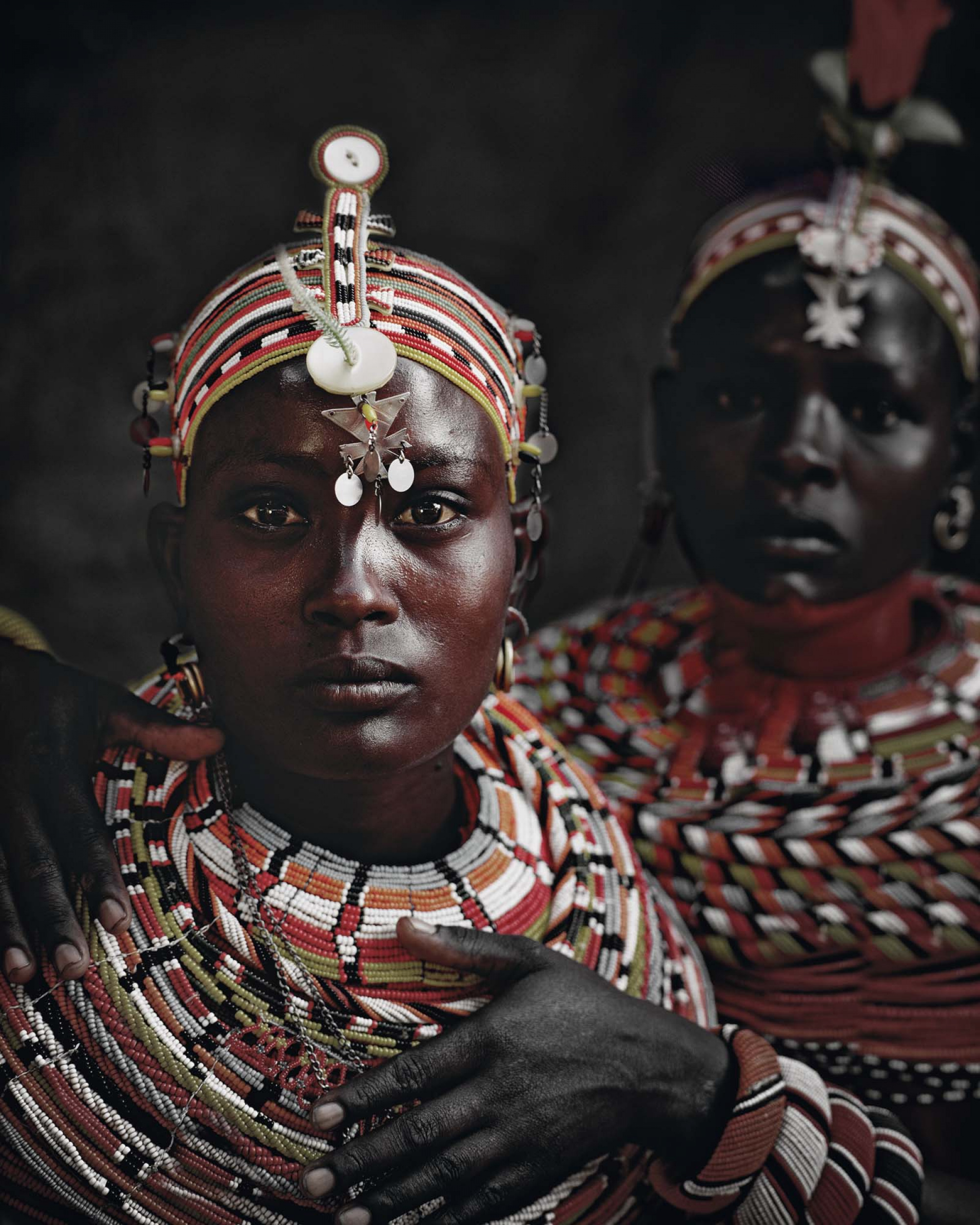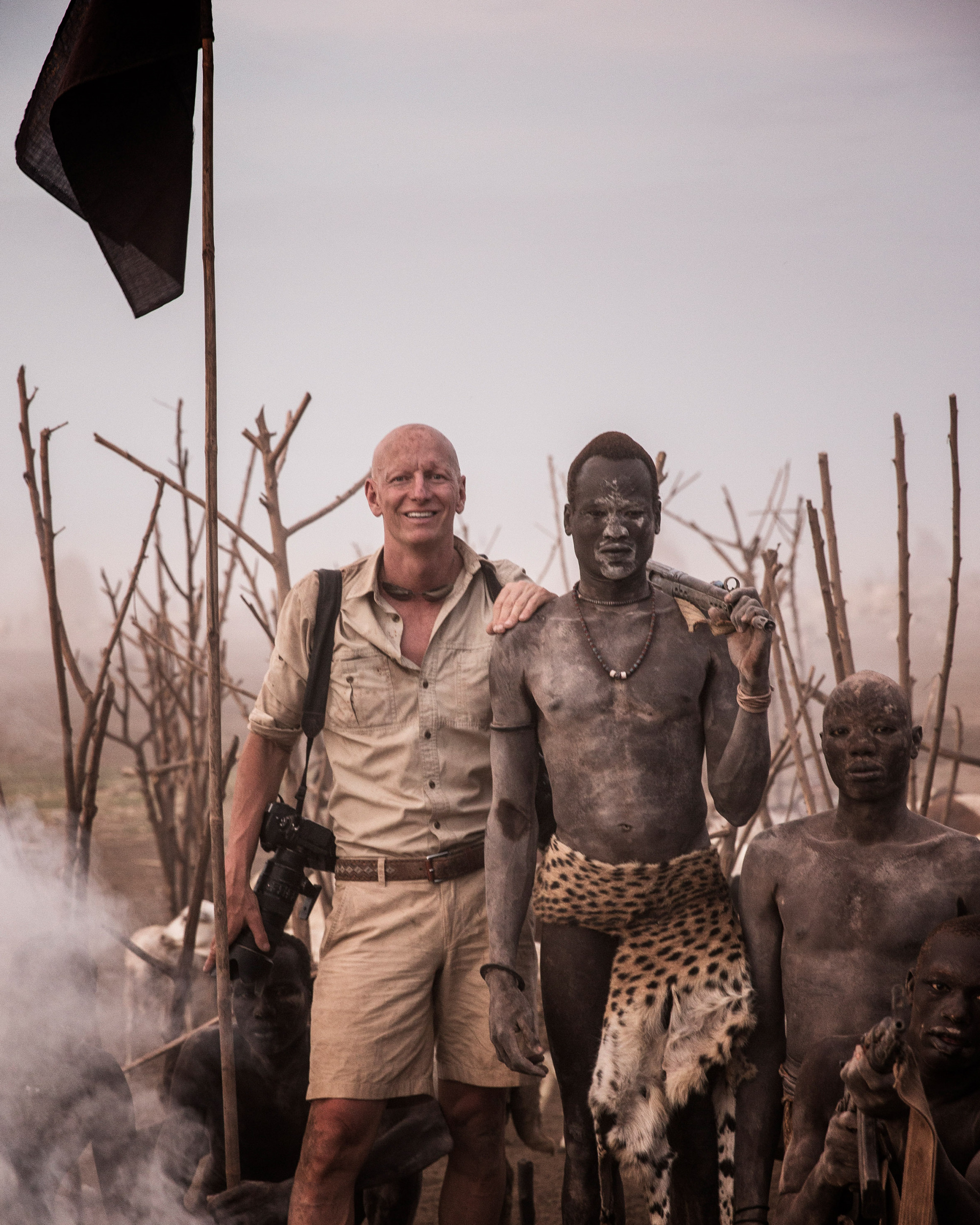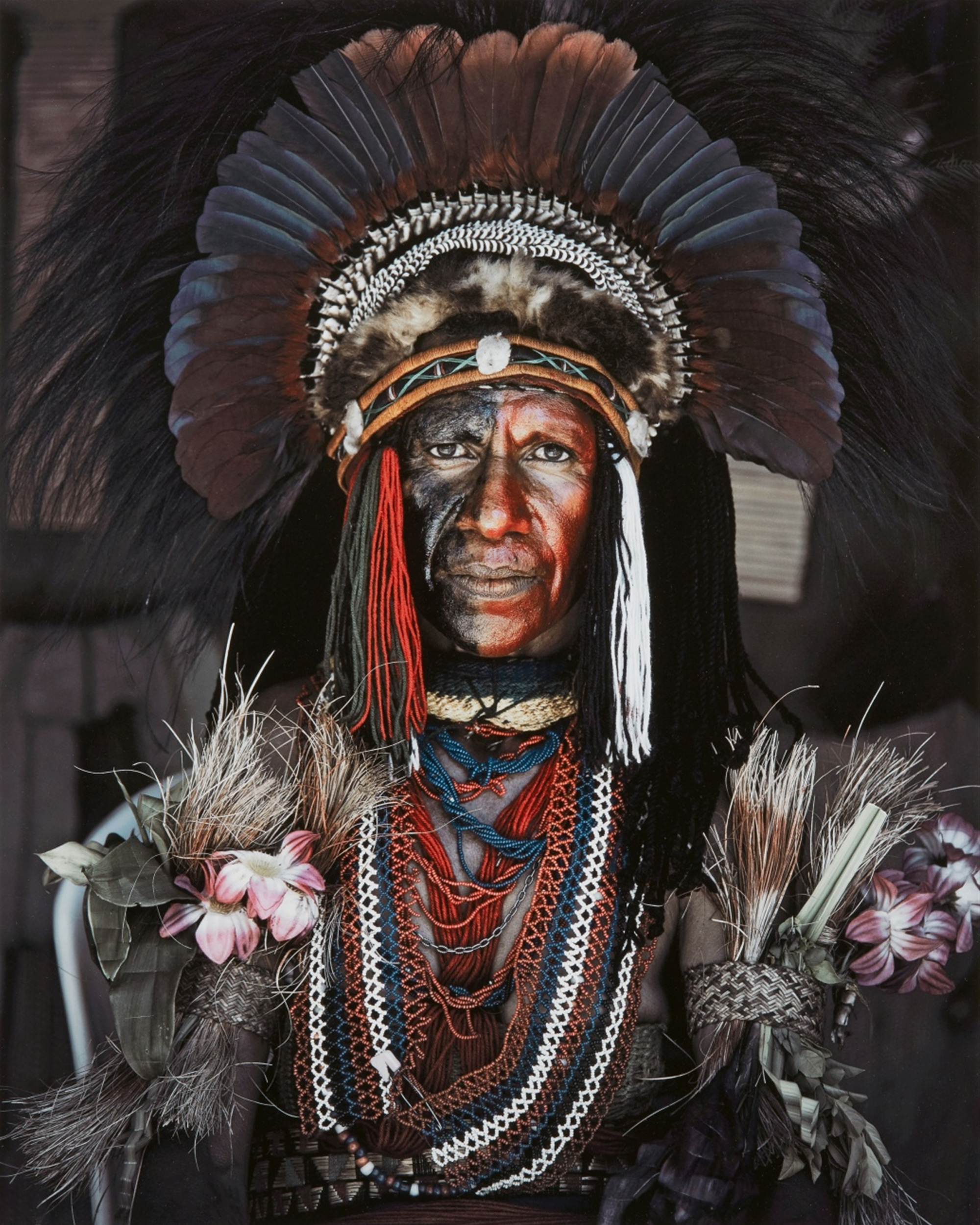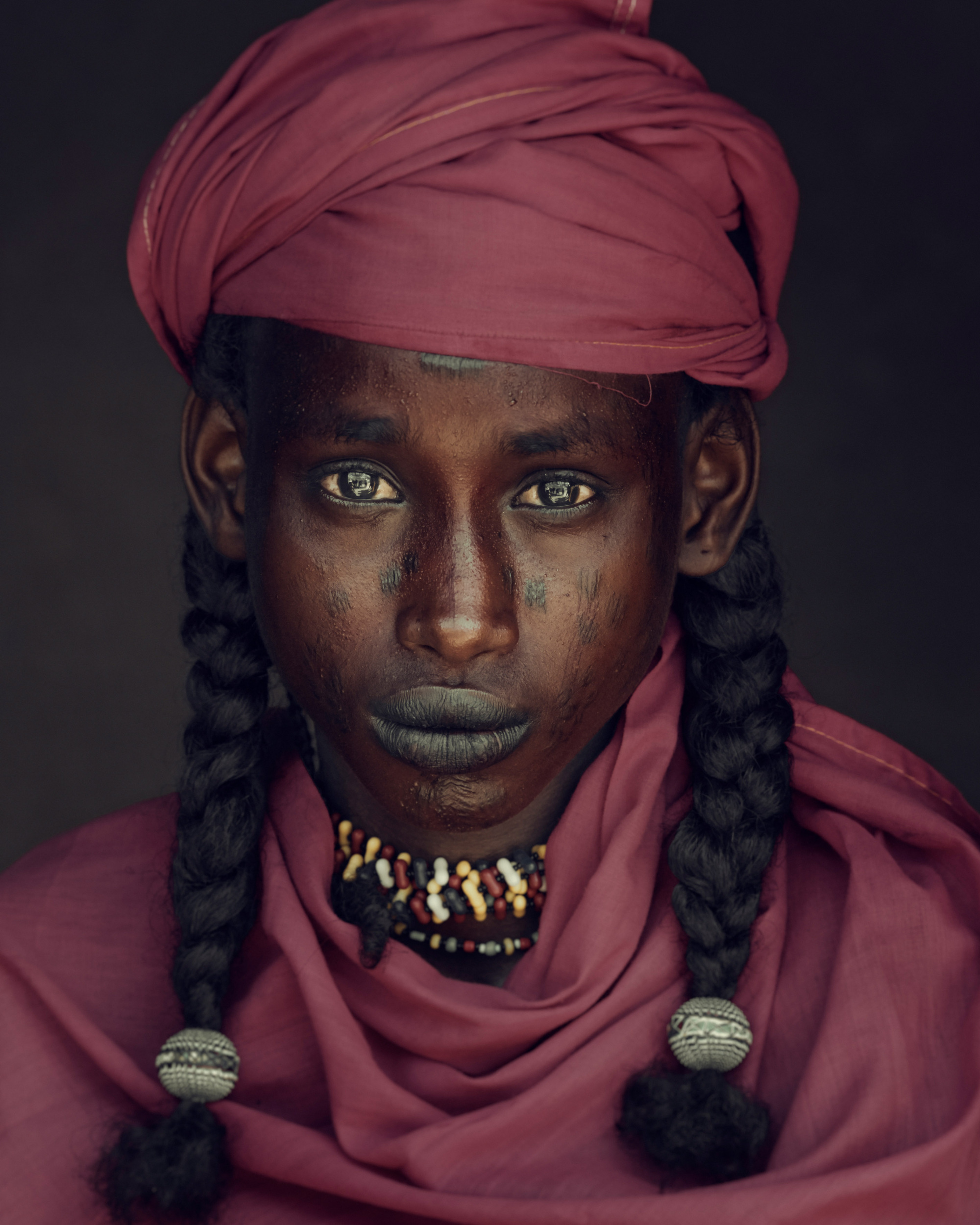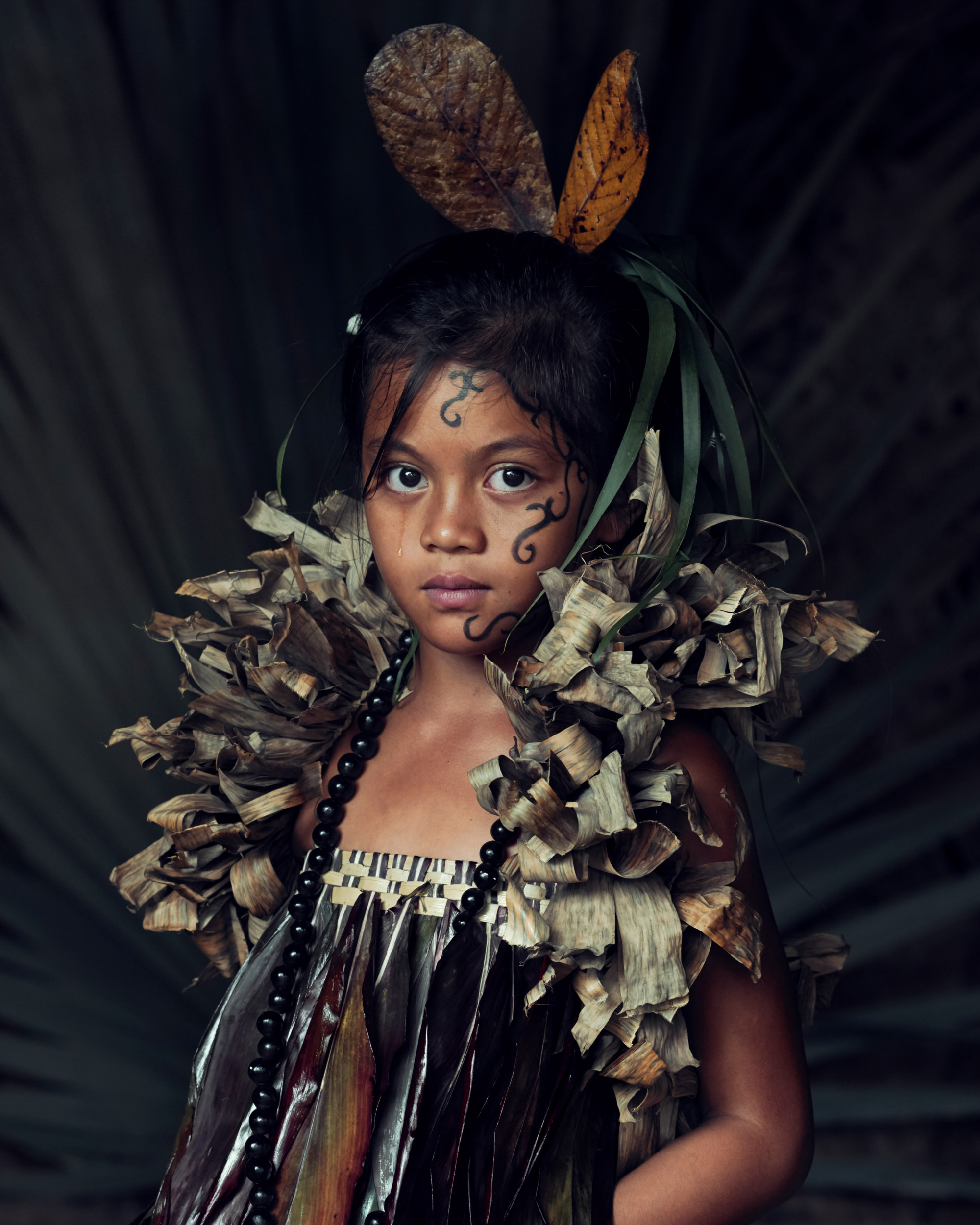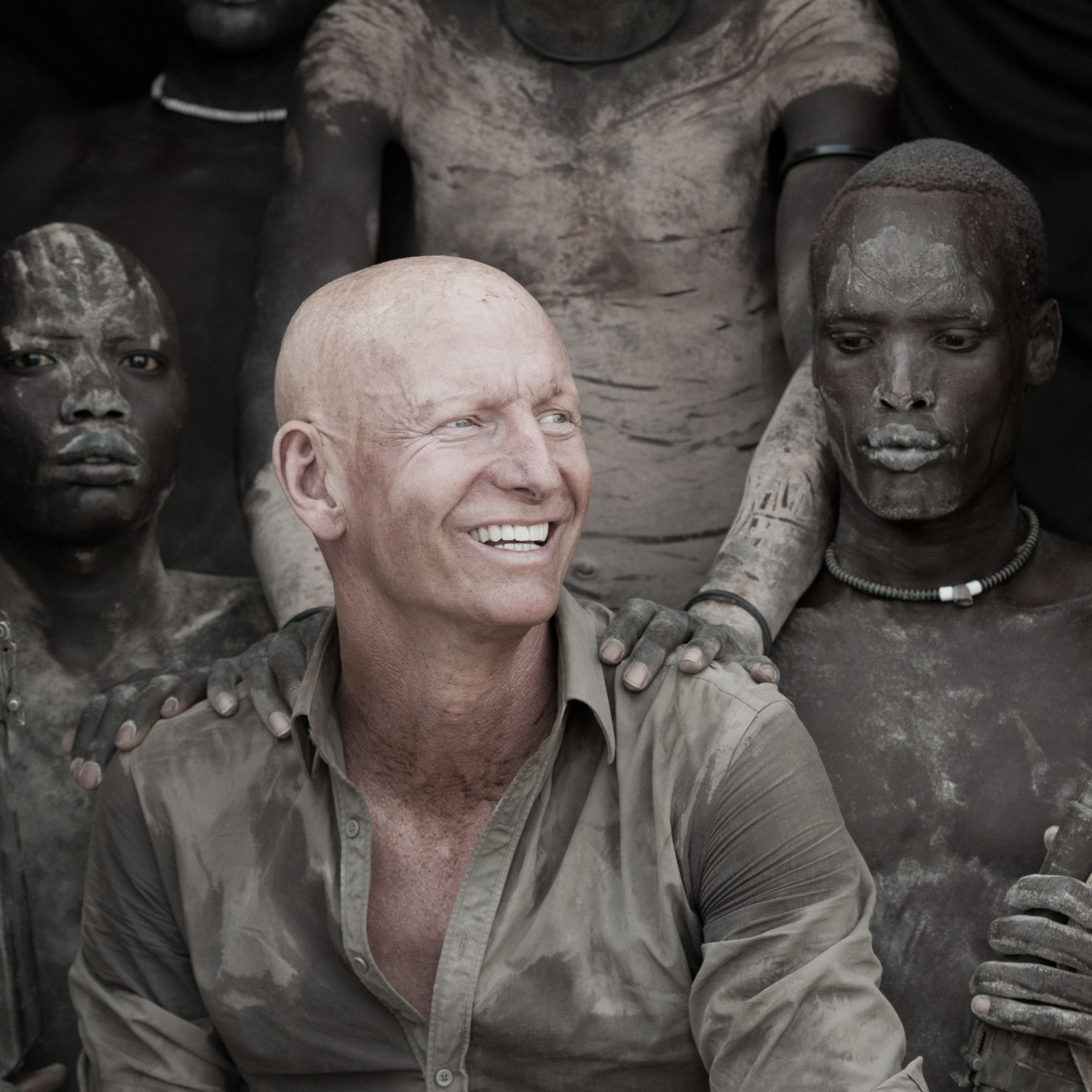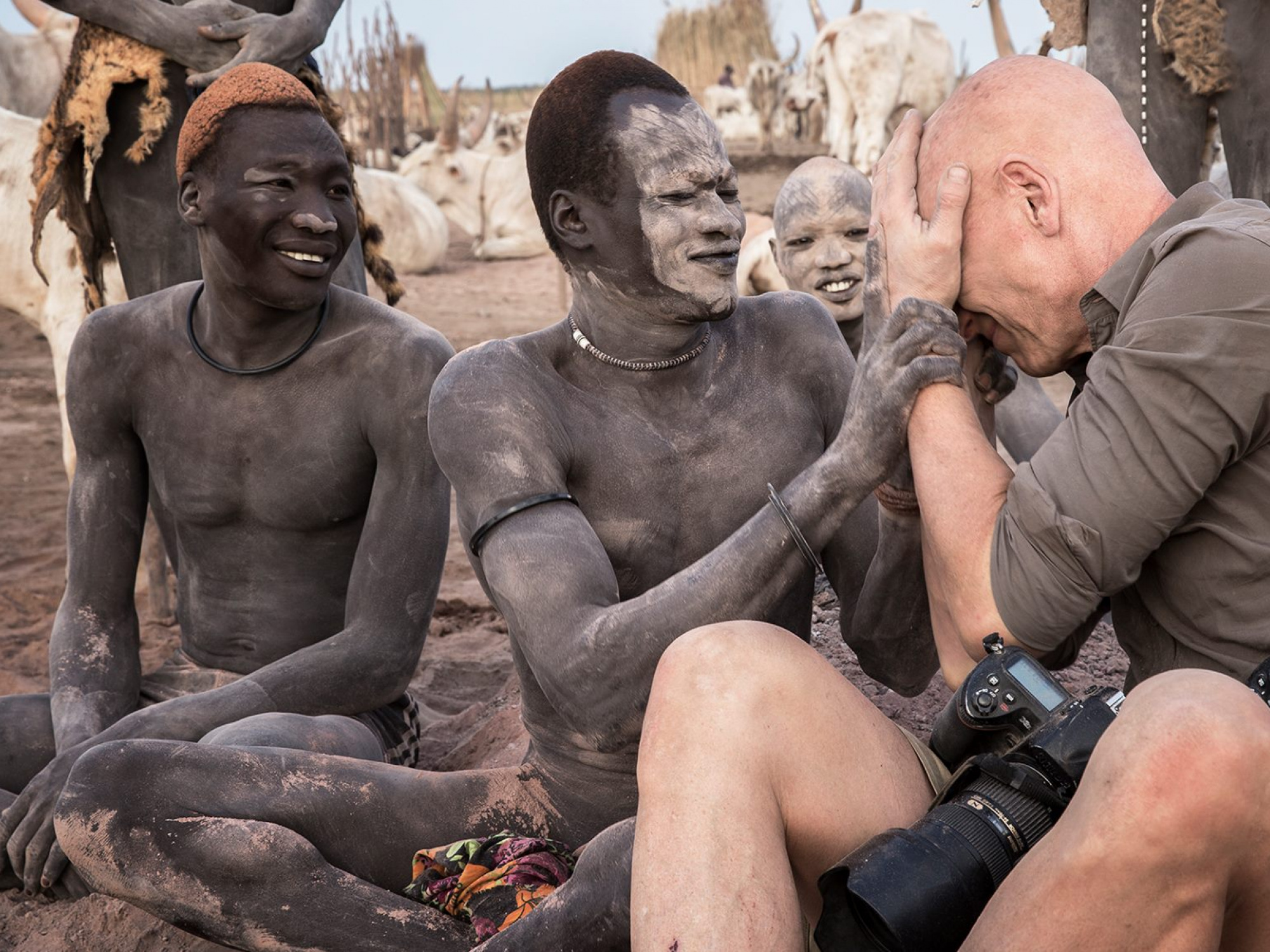Jimmy Nelson on ‘Before They Pass Away 2’: Homage to Humanity
Interview by Joost Bastmeijer for MENDO
For MENDO, I extensively interviewed renowned photographer Jimmy Nelson about his newest book, ‘Homage to Humanity’. The photo book is the sequel to ‘Before They Pass Away’ and collects over 400 evocative photographs reveals an inclusive look at the people and cultures of over thirty iconic tribes from around the world. When I was working at travel startup Charlie’s Travels, I was involved with organizing a trip that Jimmy made to Kenya - scroll down to read the travelogue he wrote about his trip with Sophie Hilbrand and Waldemar Torenstra.
Over the course of two and a half years, acclaimed photographer Jimmy Nelson travelled to seventeen different destinations for Homage to Humanity, the second book in a potential trilogy that Before They Pass Away initiated. His latest collection of over 400 evocative photographs reveals an inclusive look at the people and cultures of over thirty iconic tribes from around the world. The lion’s share of the book consists of pictures of new places and cultures that Jimmy went to – the rest of the book’s photos are shot on revisits to places he has been before, to photograph for Before They Pass Away.
For Homage to Humanity, you went back to a few cultural groups you have visited for your first book in this trilogy. Why is going back important to you?
If I had multiple lives, I would revisit all the people I have photographed over the course of my career. Because as a photographer, one takes something: a picture. The majority of the portrayed people never saw the created images, because they were all made with an analogue plate camera. I feel very obligated to return, to give them back or show them what I took, or to have a discussion with them about the pictures.
What’s the bigger goal there?
This project isn’t just about our understanding and my perception of them, it’s also about how I want them to perceive themselves. And perhaps the realization that they live with a certain wealth, a certain knowledge, understanding and status that we’ve lost in the developed world. The world is becoming homogenous and digitalized – it’s changing much quicker than it ever has before. And as the people of a certain indigenous group develop with us, which they have all the right of doing, it’s important that they don’t abandon their heritage. In the Western world, we’re not necessarily turning the clock back, but we’re beginning to reach a period in time and evolution to realize that perhaps, we made a few wrong turnings.
Where did you draw inspiration from when it comes to photographing indigenous cultures?
I was inspired by American photographer Edward Sheriff Curtis, who photographed the Native American Indians. Over a period of thirty years, he made a very romantic document about their ‘doomed’ culture. After he died, the majority of his images were destroyed – he died in shame and poverty, because he was perceived as having wasted his time on a culture that had no relevance in the developing world.
It’s an interesting story, if you think of the America of nowadays.
If you wake up and turn on your smartphone to have a look at the news, you will always see the United States. It’s the nation in the world that is being most documented, a country that up until recently perceived itself as the world’s most advanced culture. I would argue that it’s a nation eating itself. Not only politically, but also socially, humanely and dietary. Americans claim not to have a cultural foundation – it seems to me they lost all reference to what it is to be human. This might sound a bit melodramatic, but I believe that in the world of today, there are still people like the American Native Indians – cultures in various locations around the globe. We can learn from the mistakes of not acknowledging the wealth and the value of their culture, and their connection to the environment, how they live and where they’ve come from.
What is the goal of your work?
What I’m doing is not journalistic, but very idealistic, romantic, celebratory, iconic and artistic, with a very positive message. That message is a catalyst of discussion: not only for people who buy the book, who see the pictures and hear the stories, but also for the people who I’ve been taking pictures of. I’d like them to participate in the project as well – they’re doing that through the Jimmy Nelson Foundation.
How are the people you have portrayed participating?
That is why going back is important, to show that you respect the people you’ve met. I’d like to give something back. Not necessarily money, as many of the visited communities don’t even use money. By bringing back money, I would monetize the pictures. I want to bring back a reflection of self respect. To let people perceive themselves as extraordinary, wealthy and valuable – in a different way, perhaps, than in the material world. That as you travel, as you progress, as you evolve and as you change into the developed society, you are respected for some of the traditions you bring with you. For the Jimmy Nelson Foundation, versions of me go back to different communities. They will hopefully leave the foundation’s cameras behind and ask the communities to photograph themselves. We’d like to collect that visual data of who they are and how they perceive themselves, in order to create a sort of digital fireplace of indigenous culture. The books and my work are just a catalyst for a bigger tsunami of gathering and respect.
Some people criticized your previous work, by saying you are “rendering people more exotic than they really are” – did their criticism influence the making of your new book?
There will always be criticism. And the criticism is interesting – it’s good to be kept on your toes, that you are given a counter perspective. A lot of criticism was based on the title of the first book, which was perhaps childishly naive, but at the same time deliberately provocative. It was meant to cause a discussion. The criticism was based on the idea of creating a visual perception of the other. The pictures in the two books are beautifully uncomfortable. My work is a mirror of who we are and who we could be. People say that the situations “can’t be this beautiful”, that the pictures are staged and fake. But it’s a hundred percent real.
What is your photography process like, then?
My work is not documentary photography – I’m not flown in by a helicopter, spraying pictures with a 100 millimeter lens from a hut. I go and spend weeks on the locations I’m visiting. In that period, I spend 95% of my time sitting, watching, and explaining what I’m doing. At some moment in time, the people I’ve asked to photograph come to me. When they’re ready, to be perceived as they want to be seen. And then they can be as beautiful as someone on the cover of TIME Magazine. One can photograph someone in a studio and spend a lot of time taking pictures, because I want to dignify you and respect you. Or one can steal a picture of someone, through the window whilst the subject is reading the newspaper with his underpants on. Both of them are real pictures. All the pictures I take are the first option – I’d like to show a very beautiful human being, who may have no material wealth, but a cultural wealth. That is confronting, because then we have to reflect on our own identity and development – that’s when people start to criticize. I’m making an artistic statement as a catalyst for a cultural discussion and the development and evolution of the human being.
Did you change your perspective for Homage to Humanity?
Definitely so – I was ashamed and affronted by the criticism on the first book. It frustrated me that people didn’t understand what I wanted to communicate. The realization came that I’m no authority and that I have no title or heritage other than my own personal journey of fifty years. So I was desperate to make a new book and enable people to participate.
That’s why Homage to Humanity comes with a dedicated app, that makes every one of the 600 pictures in the book accessible with a smartphone. Why are these digital extras important to you?
I’m carrying on on my journey and now you can come with me. The viewer will not be alienated, not be ostracized or patronized – we don’t have all the answers, but I’d like people to participate in what I feel and see. Every picture is scannable and provides in-app, behind the scenes content. Using 360 video technology, you can stand with me when I’m in these environments, photographing and talking.
And yet, you have decided to create a book, an offline and tangible product. Why is it important for you to create books in this digital day and age?
The importance of a book is the tactility. You have to feel the photography, which is impossible on a screen. We have indoctrinated ourselves to not indulge in anything on a screen, for longer than a split second. No matter how big, important or special the picture is, you never let it sit when it’s on a screen. The screen moves, and a book doesn’t – it’s tactile and static. The demand for art coffee table books would be on the increase, the more we dare to reconnect with what is aesthetically valuable. Books make it possible to let the quality of the image sink in, if the content and quality of the books is of a high standard. You have to differentiate between street photography and high-end, analogue art annex professional photography. In my opinion, the art should be in a book and the rest should stay digital. For Homage to Humanity, we’ve tried to combine the traditional presentation with the most modern media that’s available.
Comparing your newest book to Before They Pass Away, Homage to Humanity is more in depth, with travel journals, maps, comprehensive interviews and information on the culture of the people you have visited. Why did you want to use all these extras to tell the stories for this new book?
It’s way more in-depth than the first book, but it’s still just scratching the surface. I’m not an ethnologist or anthropologist, but an amateur storyteller. That’s why I want to ensure others to start asking questions, to become part of the foundation so then the layers I’m trying to get to can be made richer and deeper in time. I expect very few people to go on the journey that I’m on physically, but all human beings should go on it spiritually and mentally. As we move on in the years to come in this very fast developing world, it’s extremely important to identify with ourselves as human beings, with our personalities, our heritage and our culture. By that, every authentic individual can become more valid to society. My work is meant to be an inspiration to become more in touch with your own identity. It’s a homage to humans.
With Homage to Humanity, Jimmy Nelson presents his latest collection of 400 evocative photographs revealing an inclusive look at the people and cultures of over thirty iconic tribes. You can get your hands on a signed copy of Homage of Humanity by hopping by MENDO’s flagship store on September 23rd from 14:00-16:00, when Jimmy Nelson signs his new book.
Travelogue Charlie’s Travels – by Jimmy Nelson
Renowned photographer Jimmy Nelson travelled to Kenya to go on an off the beaten track Charlie's Travels trip with Dutch TV presenter Sophie Hilbrand and actor Waldemar Torenstra (and their two kids). Drawing a lot of inspiration from Jimmy's photography work, it was quite exciting for me to be involved with this trip, as the Content Manager of Charlie's Travels. Jimmy took some amazing pictures and wrote a small testimonial about their trip, which is also online on the blog page of the Charlie's Travels website.
“It’s rare that after all these years that I’ve been traveling, many years, and many more to come, that one meets a kindred spirit. Somebody who is intrinsically connected with what he’s doing and what he wants to see, feel and share. The experiences I have had with Charlie’s Travels included all of this. Ninety per cent of the time when I travel I am extremely neurotically in control, but with Charlie the whole process was completely and utterly delegated. Charlie took over the whole journey and I had no idea what I was going to see, where I was going to go and what I was going to feel and think. All I knew that it was in Kenya.
Waldemar Torenstra & Sophie Hilbrand
The journey was also made even more special because it was a very unusual group of people. Dutch actor Waldemar Torenstra and his wife Sophie Hilbrand with their children. I did not know them very well before the trip. I love children and I am very comfortable with them, but to go on a trekking of the beaten track in Kenya with somebody else’s children was a bit nerve-racking. I always get on a plane anywhere in the world and I land in the strangest places without one element of sweat on my brow. But on this particular case I was nervous. All that sweat on my brow was absolutely unnecessary, because this journey couldn’t have been smoother.
To begin with, the people who were on it, not only was it managed by Charlie but he also had a fantastic cooperation with the Maasai, the ultimate symbiosis. Everything went flawless. With the Maasai, my team and the family it was perfect, all the characters were so connected and wanted to feel what we saw and experienced.
Travelling with children
The two children of Waldemar and Sophie... When you have children, these are the model children of what you should aspire to create, have and grow and bring up. Intrinsically that had to do a lot with them, but more importantly with the parents, who are widely travelled, extremely connected, very wise and intelligent. Not only as with me they have completely let go, they were trusting me and Charlie’s Travels. What actually ended up happening was a dream.
Jimmy Nelson and the Maasai
It was a dream week, in the Christmas period and we disappeared into the Kenyan landscape with the Maasai in a very unusual way. We walked through different climates over hills, through jungles, across deserts and up mountains and ended with this panoramic epic view of the Magadi desert. The weather was perfect. It was sunny all day. Everything was organized perfectly. The Maasai who we walked with were the kindest, sweetest people you can ever imagine. This was all organized so well by Charlie.
There are a fewer people on the planet who are better connected with their environment and culture. Kenya is becoming modern. It’s not hiding from the past at all. The Maasai are one of the few tribes on the planet who are managing to find – I think – quite a beautiful balance with evolving out of their past and moving into our future. They are using modern technology, some have smartphones, some are on motorbikes. Every evening they sit down, they reconnect with the soil, they light fires and they sing and dance under the stars. They tell stories, they hold us, protect us, cook for us they laugh with us. There’s not one element of threat, not one element of intimidation other than kindness. At the end of the day everything is packed and of we go on another modern journey. There is a very beautiful balance of the old and new world.
Maasai Motorsafari
At the end something magical happened, something very unusual. Charlie had organized for us to go on a motorcycle trip through the desert. I am usually not the person who likes to use this kind of transport during a trip, because it can be a bit noisy and dirty. But he advised it and I’d had let go and delegated it and there we were.. With a fantastic Maasai crew, kids and adults. We jumped on the back on these old classic bikes and essentially drove through the Kenyan landscape, through the mud, through the dust, and we had the time of our lives. We laughed, I giggled so hard (I’m not allowed to say it..) I actually peed in my pants. But that didn’t matter because we were already covered in mud and sweat.
Joie de vivre: Charlie & Jimmy Nelson
That ‘Joie de vivre’ you can have... with the Maasai, on some motorbikes, with Waldemar & Sophie, their kids and Marit and Stephanie was absolutely golden. It’s priceless and there’s no organisation who could have organised it better.
I thank Charles for this journey. This journey of teaching me not only to see and share and join with the Maasai in Kenya, but also to let go. Letting others take me and explore new horizons I have never seen before. Charlie you are amazing, we are extremely grateful. Anybody who reads this, can be assured that when Charlie takes you on a journey, it will be a journey of your lifetime. Thank you very much.”
Sophie Hilbrand and the Maasai
As a well-known Dutch actress and TV host, Sophie has seen and traveled a lot around the world. In her work, she has also touched upon issues around mental health and emotional well-being. “We can really learn from the Maasai and their way of life. For quite some time now, I have concerned myself with matters of depression, burn-outs and the western world. One feels the loss of certain values, that have disappeared in our own culture. This is why we have to keep looking at these people, to learn or re-discover (and feel intuitively) what is truly important.“
